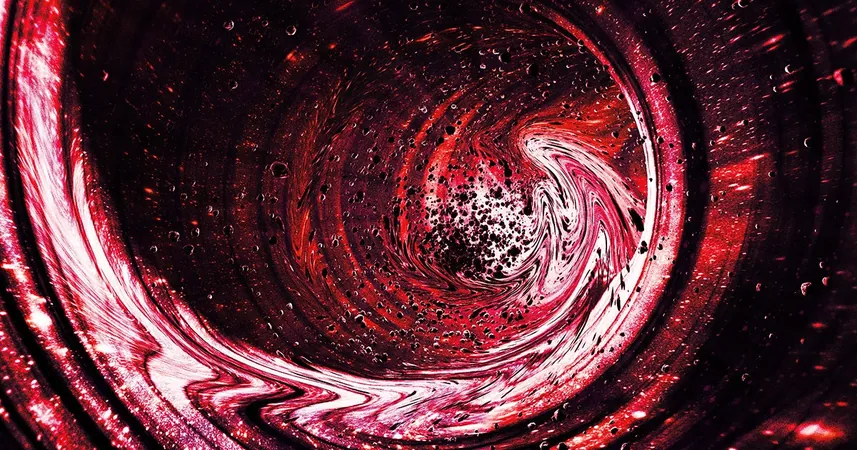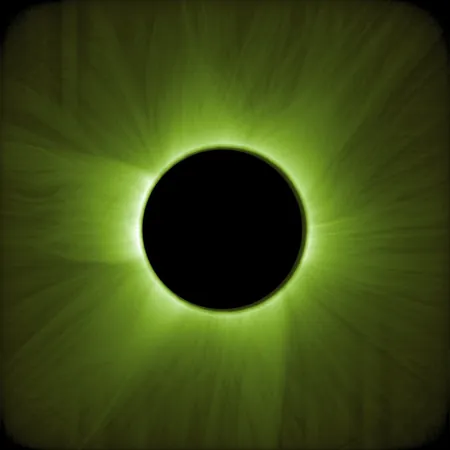
Stunning Discovery: Astronomers Uncover a Massive Dark Matter Bridge in the Perseus Cluster!
2025-04-28
Author: William
A Cosmic Swirl of Galaxies: The Perseus Cluster Unraveled
The Perseus cluster is a breathtaking congregation of thousands of galaxies, held tightly together by the force of gravity. Known for its truly colossal mass — a staggering 600 trillion suns — it has long been considered one of the universe’s most ‘relaxed’ galaxy clusters, showing no signs of past cataclysmic mergers that typically alter such formations. At first glance, Perseus seems calm and stable.
Shattering the Illusion: Evidence of a Tumultuous Past
However, an international team of astronomers, in groundbreaking research published in the journal Nature Astronomy, has discovered something astonishing: a ‘bridge’ of dark matter leading to the heart of the cluster. This intriguing finding suggests that Perseus may not be as serene as it appears; rather, it could be the remnant of a colossal object that collided with the cluster billions of years ago.
"This is the missing piece we've been searching for," exclaimed James Jee from the University of California, Davis. He explained how this discovery transforms our understanding of the peculiar shapes and gas dynamics observed in the Perseus cluster, placing them within the framework of a historic merger.
The Dark Matter Mystery: What Lies Beneath?
Dark matter remains one of the universe's greatest enigmas, constituting around 80% of all mass yet remaining invisible and undetectable by conventional means. Its gravitational influence is essential for the formation of galaxies, acting like a cosmic glue that shapes the universe.
Unlocking the Secrets of the Cosmos: Gravitational Lensing
To delve into this mystery, astronomers utilized the Subaru Telescope in Japan to analyze gravitational lensing effects. This occurs when a massive object bends the light from more distant celestial bodies, offering invaluable glimpses into the structures concealed within.
Through advanced techniques of weak gravitational lensing, researchers mapped dark matter distributions, uncovering a massive clump about 1.4 million light-years from Perseus's center, weighing an astonishing 200 trillion solar masses — a weight more than 130 times that of the Milky Way.
The Tale of a Cosmic Collision: A Bridge to the Past
The researchers identified the clump as a formidable intruder, leaving behind a dramatic dark matter ‘bridge’ linking it to the core of the cluster. This connection is a compelling indicator of a past collision, with simulations suggesting it occurred roughly five billion years ago, forever altering the structure of Perseus.
"It required boldness to challenge the prevailing beliefs, but our simulation results, alongside recent observations from the Euclid and XRISM space telescopes, offer compelling support for our findings," stated HyeongHan Kim, co-author from Yonsei University in South Korea.









 Brasil (PT)
Brasil (PT)
 Canada (EN)
Canada (EN)
 Chile (ES)
Chile (ES)
 Česko (CS)
Česko (CS)
 대한민국 (KO)
대한민국 (KO)
 España (ES)
España (ES)
 France (FR)
France (FR)
 Hong Kong (EN)
Hong Kong (EN)
 Italia (IT)
Italia (IT)
 日本 (JA)
日本 (JA)
 Magyarország (HU)
Magyarország (HU)
 Norge (NO)
Norge (NO)
 Polska (PL)
Polska (PL)
 Schweiz (DE)
Schweiz (DE)
 Singapore (EN)
Singapore (EN)
 Sverige (SV)
Sverige (SV)
 Suomi (FI)
Suomi (FI)
 Türkiye (TR)
Türkiye (TR)
 الإمارات العربية المتحدة (AR)
الإمارات العربية المتحدة (AR)